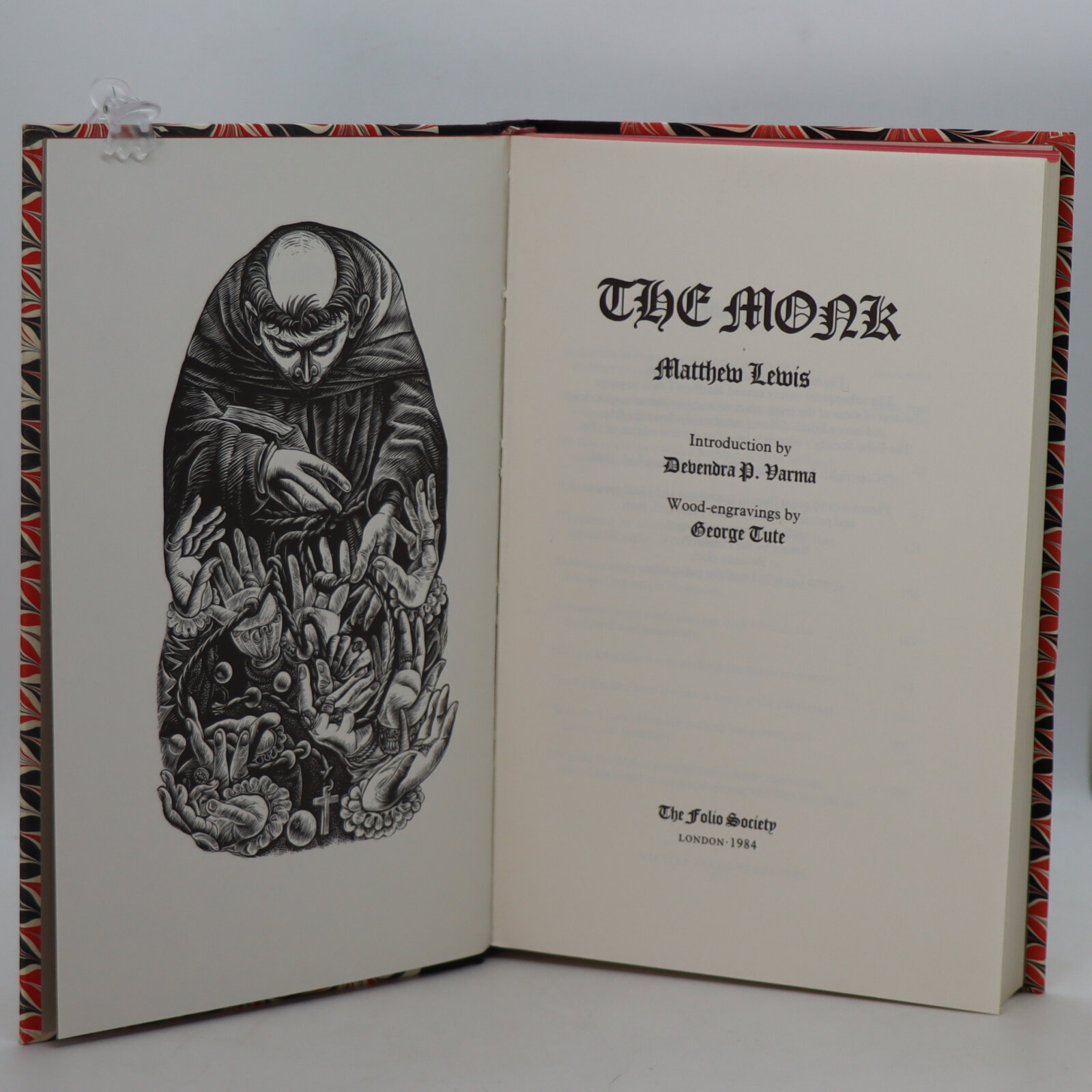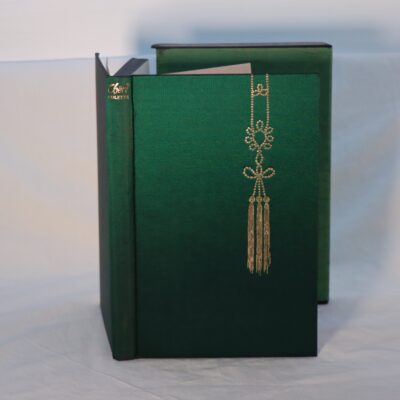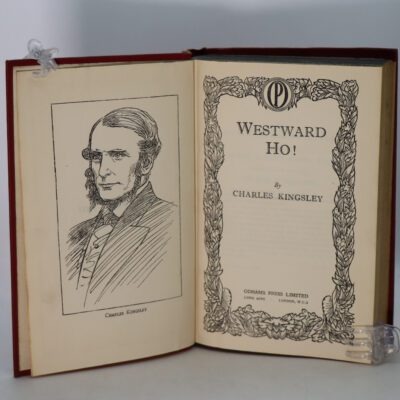The Monk.
By Matthew Lewis
ISBN: 9780191009631
Printed: 1984
Publisher: The Folio Society. London
| Dimensions | 16 × 24 × 3 cm |
|---|---|
| Language |
Language: English
Size (cminches): 16 x 24 x 3
Condition: Fine (See explanation of ratings)
Your items
Item information
Description
In a fitted box. Black cloth spine with gilt title. Red and black marbled boards.
F.B.A. provides an in-depth photographic presentation of this item to stimulate your feeling and touch. More traditional book descriptions are immediately available.
Set in the sinister monastery of the Capuchins in Madrid, The Monk is a violent tale of ambition, murder, and incest. Lewis ‘s sensational novel was first published in 1796, when he was in his early twenties.
Matthew Gregory Lewis (9 July 1775 – 14 or 16 May 1818) was an English novelist and dramatist, whose writings are often classified as “Gothic horror”. He was frequently referred to as “Monk” Lewis, because of the success of his 1796 Gothic novel The Monk. He also worked as a diplomat, politician, and an estate owner in Jamaica.
As a writer, Lewis is typically classified as writing in the Gothic horror genre, along with the authors Charles Maturin and Mary Shelley. Lewis was most assuredly influenced by Ann Radcliffe’s The Mysteries of Udolpho and William Godwin’s Caleb Williams. In fact, Lewis actually wrote a letter to his mother a few months before he began writing The Monk, stating that he saw a resemblance between the villain Montoni from The Mysteries of Udolpho and himself.
Lewis took Radcliffe’s obsession with the supernatural and Godwin’s narrative drive and interest in crime and punishment, but Lewis differed with his literary approach. Whereas Radcliffe would allude to the imagined horrors under the genre of terror-Gothic, Lewis defined himself by disclosing the details of the gruesome scenes, earning him the title of a Gothic horror novelist. By giving the reader actual details rather than the terrifying feelings rampant in Radcliffe, Lewis provides a more novelistic experience. In the article “Matthew Lewis and the Gothic Horror of Obsessional Neurosis”, Ed Cameron argues that “Lewis disregards and often parodies the sentimentality found in Radcliffe’s work.”
Lewis is often criticized for a lack of originality. Though much of his career was spent translating the texts of others, these criticisms more often refer to his novel The Monk and his play The Castle Spectre. Beginning with The Monk, Lewis starts the novel with an advertisement:
The first idea of this Romance was suggested by the story of the Santon Barsisa, related in The Guardian. – The Bleeding Nun is a tradition still credited in many parts of Germany; and I have been told that the ruins of the Castle of Lauenstein, which She is supposed to haunt, may yet be seen upon the borders of Thuringia. – The Water-King, from the third to twelfth stanza, is the fragment of an original Danish Ballad – And Belerma and Durandarte is translated from some stanzas to be found in a collection of old Spanish poetry, which contains also the popular song of Gayferos and Melesindra, mentioned in Don Quixote. – I have now made a full avowal of all the plagiarisms of which I am aware myself; but I doubt not, many more may be found, of which I am at present totally unconscious.
While some critics, like those of The Monthly Review, saw combinations of previous works as a new invention, others, including Samuel Taylor Coleridge, have argued that by revealing where he found inspiration, Lewis surrendered part of his authorship. This bothered Lewis so much that in addition to a note in the fourth edition of The Monk, he included notes to the text when he published The Castle Spectre as a way to counteract any accusations of plagiarism. The success of the tactic is debatable.
Lewis’s monodrama The Captive tells of a woman consigned to a mental asylum by her husband against her will, who gradually drives herself mad through the terrible spectacles she witnesses there. It is a short script of only a few pages, but one that was performed over a few hours, giving the impression that much of the work must have taken place in slow recreation of physical violence within the asylum. The performance was shut down halfway through, on account of ladies in the audience fainting. The Morning Chronicle‘s review suggests “the tears of an audience have generally been accounted the highest species of applause… [but] a poet must have an odd taste who would be rewarded with hysteric fits.” This suggests that Lewis himself took the attitude of enjoying throwing audiences into “fits” and being “rewarded” by it.
Lewis provided many epilogues and introductions for other performances put on in the Drury Lane Theatre, most often for Thomas Holcroft. Lewis would insert ghosts into otherwise non-supernatural plays. These ghosts would complain about the lack of ghosts in said non-supernatural plays. “I see not one Ghost through the whole of the part / Cannot once find a place for a Tragedy start” (from Holcroft’s Knave or Not?, 1798). This may represent purposeful self-mockery.
Lewis wrote in 1801 a satire on the reception of his work under the pseudonym “Maritius Moonshine”, in which he slanders his own writings as “loathesome [sic] spectacles” and insults himself for being a poor MP (“thy brighter parts are lost, / And the state’s welfare by a Goblin croft”). In the preface to Alfonso, King of Castile, Lewis writes “that this play is stupid, let it be said”. Lewis consistently indicates that he is fully aware of the public opinion of his works as poor and sensational, embraced these definitions, and did not care about them. Almost every one of his works is prefaced by admissions and lists of “minor plagiarisms”.
Want to know more about this item?

Share this Page with a friend











